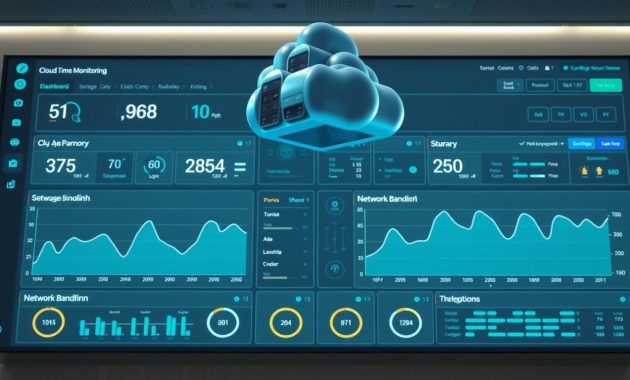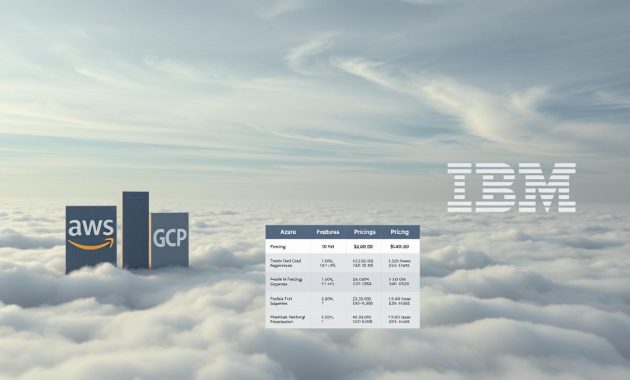In the intricate realm of cloud computing, a profound comprehension of cloud server billing is imperative for the effective management of expenses. It is essential to be vigilant against the potential for unforeseen charges in your cloud server billing to circumvent financial shocks. The cornerstone of maintaining fiscal discipline lies in the adept management of costs, necessitating a comprehensive grasp of the billing practices inherent to cloud servers.
Attaining a solid foundation in the fundamentals of cloud server billing, coupled with the implementation of strategies to monitor resource utilization, is pivotal in averting unexpected charges. This approach ensures the success of your cost management endeavors. It empowers you to optimize the utilization of cloud services while maintaining fiscal prudence, a critical imperative for both enterprises and individuals who depend on cloud server billing for their operational needs.
Understand Your Cloud Service Pricing Models
To effectively manage your cloud expenses, it is imperative to comprehend the diverse cloud pricing models at your disposal. Familiarity with the various pricing models, encompassing pay-as-you-go, reserved instances, and spot instances, is crucial. Each model employs a distinct cost calculation methodology. Understanding pricing terminology, such as resource usage, data transfer, and storage, is equally vital for making informed decisions regarding your cloud services.
When assessing cloud pricing models, several key factors must be considered:
- Cost calculation: Grasp the methodology employed by your cloud provider to determine costs, including any supplementary fees for data transfer or storage.
- Pricing terminology: Acquaint yourself with the definitions of terms like resource usage, instance types, and storage options to facilitate informed decision-making.
- Cloud pricing models: Be cognizant of the disparate pricing models available, including pay-as-you-go, reserved instances, and spot instances, to select the most appropriate for your requirements.
By grasping the intricacies of your cloud service pricing models and cost calculation methodologies, you can more effectively manage your expenses and circumvent unforeseen charges. Dedicate time to scrutinize your cloud provider’s pricing terminology and models to guarantee optimal value for your financial investment.
Monitor Your Resource Usage Regularly
Engaging in resource usage monitoring is imperative to circumvent unforeseen expenses in cloud server billing. Vigilance in tracking your resource utilization enables the identification of cost-saving opportunities and prevents overprovisioning. This entails continuous real-time tracking, establishment of usage alerts for threshold breaches, and analysis of usage patterns to uncover avenues for cost optimization.
Initiating resource usage monitoring involves utilizing tools from your cloud service provider, such as dashboards and monitoring platforms. Moreover, third-party tools can offer deeper insights into your resource utilization. Essential features to seek in a monitoring tool encompass:
- Real-time monitoring and alerts
- Historical usage data and trends
- Customizable dashboards and reports
- Integration with other cloud services and tools
Utilizing these tools and functionalities facilitates a comprehensive understanding of your resource usage, enabling you to make strategic decisions regarding cost optimization. It is crucial to periodically assess your usage patterns and adjust your resource allocation to prevent unexpected expenses and maximize the efficiency of your cloud resources.

Implement Budgeting and Cost Management Strategies
To effectively manage your cloud costs, it’s essential to establish a solid budgeting and cost management plan. This involves budgeting for your expected resource usage, ensuring you have enough resources to meet your needs without over-provisioning. By doing so, you can avoid unexpected charges and optimize your resource allocation.
When it comes to cost management, it’s crucial to track your expenses regularly. This can be achieved by using cost management tools that provide detailed insights into your resource usage and costs. By analyzing this data, you can identify areas where you can optimize your resource allocation and reduce costs.
Some key strategies for effective resource allocation include:
- Identifying your most resource-intensive workloads and optimizing them for cost efficiency
- Right-sizing your resources to match your actual usage patterns
- Using reserved instances or spot instances to reduce costs
By implementing these strategies, you can effectively manage your cloud costs and ensure that your resource allocation is optimized for your specific needs.
Evaluate Your Cloud Service Provider Options
In the realm of cloud service provision, the imperative to discern the most economical option is paramount. A meticulous cloud provider comparison is indispensable to avert the expenditure on superfluous services. It is crucial to scrutinize aspects such as pricing transparency, encompassing any hidden costs that may not be immediately discernible.
Central to this evaluation is the examination of the pricing models proffered by various providers. Some may impose charges based on resource utilization, whereas others might present a fixed monthly tariff. It is imperative to compute the total cost of ownership, including supplementary fees for support or maintenance.

Several critical considerations emerge when assessing cloud service providers:
- Cost of data transfer and storage
- Level of customer support and billing transparency
- Scalability and flexibility of services
Through a detailed examination of these elements and a consideration of your specific needs, you can make an informed choice. This will enable you to select a cloud service provider that aligns with your requirements and financial constraints.
Optimize Your Cloud Resources Effectively
To maximize the utility of your cloud resources, a nuanced understanding of their optimization is paramount. This necessitates a comprehension of the advantages and disadvantages inherent in various methodologies, such as the dynamic scaling of resources versus their fixed allocation. Resource optimization is pivotal in mitigating unnecessary expenditure and ensuring that resources are utilized with maximum efficiency. Through the implementation of optimized resource management strategies, the potential for waste reduction and cost savings is significantly enhanced.
The concept of autoscaling emerges as a critical component of resource optimization, enabling the automatic adjustment of resource allocation in response to fluctuating demand. This is particularly advantageous for applications characterized by variable workloads. Concurrently, the practice of resource tagging facilitates the efficient organization and tracking of resources. This capability allows for a deeper understanding of resource utilization patterns, thereby empowering more strategic optimization decisions.
Several best practices for optimizing cloud resources are noteworthy:
- Scheduling resource usage to align with your workload
- Employing autoscaling to dynamically adjust resource allocation based on demand
- Implementing resource tagging to enhance tracking and organization of resources
Adherence to these best practices and the implementation of effective resource optimization strategies can lead to cost reduction, enhanced efficiency, and optimized utilization of cloud resources. It is imperative to periodically reassess and refine your resource optimization strategies to ensure their continued relevance and effectiveness in response to evolving requirements.
Understand Data Transfer and Egress Charges
In the realm of cloud cost management, it is imperative to comprehend the elements that contribute to your financial outlay. Data transfer costs and egress charges are pivotal factors that can substantially influence your budget. It is crucial to understand what these costs entail. Data transfer costs arise when data is moved between different regions or out of the cloud. This encompasses data transfers to and from cloud storage, as well as data exchanged between cloud resources.
Grasping the pricing models for data transfer is essential for cost minimization. Cloud providers typically charge for data transfer based on the volume of data exiting their network. This is commonly referred to as egress charges. To mitigate these expenses, leveraging content delivery networks (CDNs) to cache frequently accessed data can be beneficial. This approach reduces the necessity for data transfer. Furthermore, optimizing data storage locations to be proximal to users can also diminish data transfer costs.
- Using CDNs to cache frequently accessed data
- Optimizing data storage locations to reduce data transfer distances
- Implementing data compression to reduce the amount of data transferred
By comprehending the nature of data transfer costs and implementing strategies to minimize them, you can effectively manage your cloud expenses. This, in turn, enables you to reduce your overallegress charges. Such optimization contributes to cost minimization and enhances your cloud resource utilization.
Review Contracts and Agreements Carefully
In the realm of cloud server billing, the meticulous examination of contracts and agreements is paramount. It is essential to comprehend the intricacies of your cloud service agreements, encompassing renewal stipulations and potential tariff adjustments. Such knowledge empowers you to make strategic decisions, thereby circumventing unforeseen financial burdens.
A comprehensive contract review can significantly mitigate unnecessary expenditures. Scrutinize clauses detailing payment terms, such as incentives for extended commitments or penalties for premature termination. Grasping these provisions enables you to secure advantageous terms and evade unforeseen financial obligations.
Consider the following when scrutinizing your contracts:
- Comprehend the terms and conditions of your agreement, including renewal stipulations and tariff adjustments
- Analyze the payment terms to ensure clarity on any discounts or penalties
- Engage in negotiations to secure a more favorable agreement, tailored to your specific requirements and usage patterns
Through diligent contract and agreement scrutiny, you can circumvent unexpected financial liabilities and optimize your cloud server expenditures. Prioritize a detailed contract review and negotiate payment terms that align with your interests.
Stay Informed About Updates and Policies
Adherence to the evolving dynamics of cloud computing is imperative for the effective management of your cloud server billing. It is essential to maintain a vigilant stance, regularly monitoring the announcements and updates disseminated by your cloud service provider. Engage with their newsletters, subscribe to their blog, or participate in online forums dedicated to their users. This engagement will keep you abreast of any policy revisions, pricing adjustments, or novel service introductions that could significantly alter your expenditure.
Furthermore, a meticulous examination of your monthly billing statements is indispensable. Delve into the charges with a critical eye, comparing them against your anticipated usage to promptly detect and rectify any unforeseen fees or discrepancies. Through such diligence and proactive measures, you can maintain the predictability of your cloud server expenses, ensuring they remain in harmony with your business objectives.
